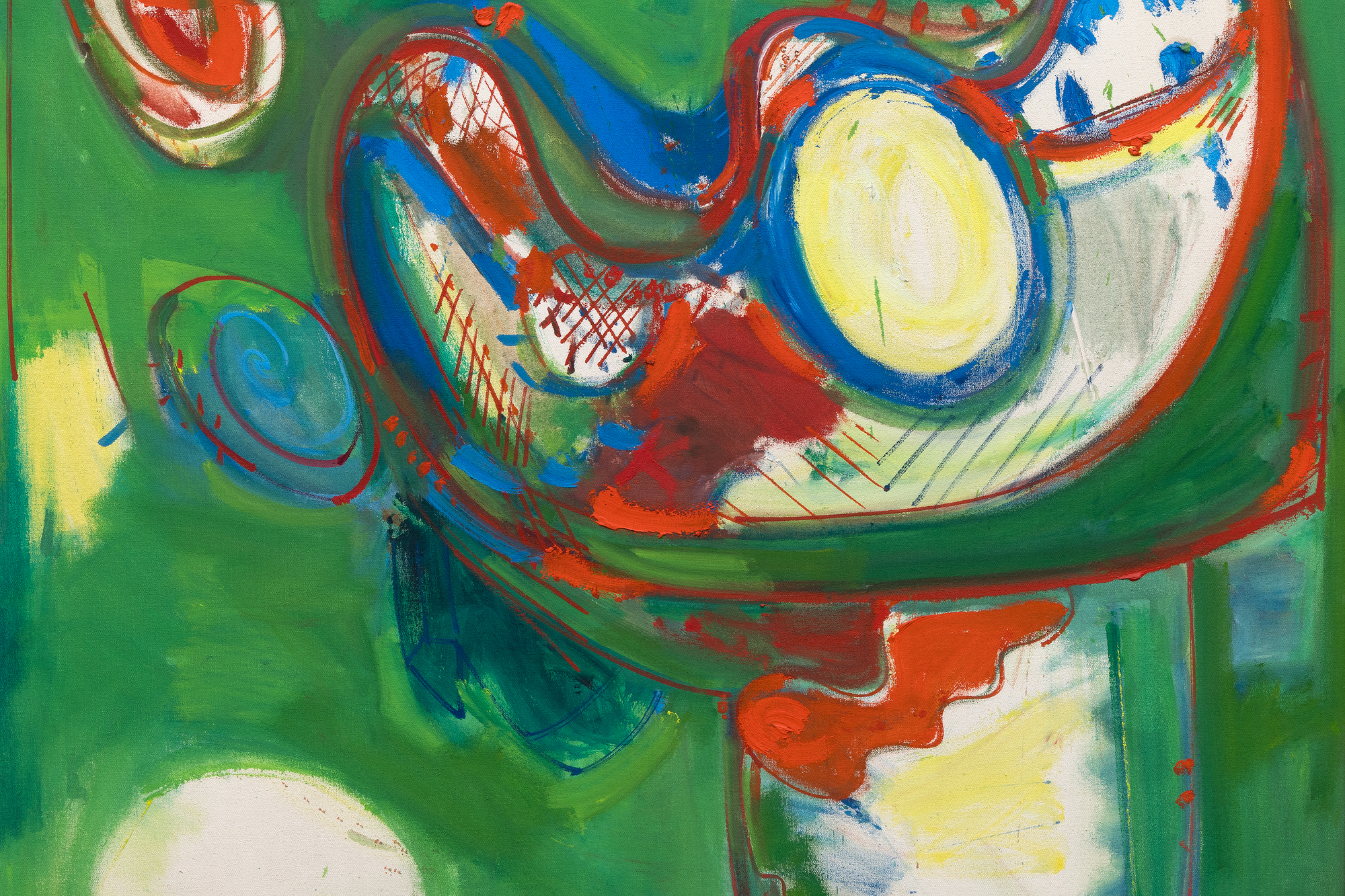汉斯·霍夫曼尼恩(1880-1966)







种源
安德烈-艾默瑞画廊,纽约汉斯-霍夫曼遗产
纽约 Ameringer & Yohe 美术馆
新泽西州私人收藏
展会信息
纽约,纽约,贝蒂-帕森斯画廊,汉斯-霍夫曼:近期作品展,1947 年 3 月 24 日至 4 月 12 日,凤凰 III明尼苏达州圣保罗,明尼苏达州博览会,作为凤凰三号,1947 年
巴黎,Maeght 画廊,汉斯-霍夫曼:绘画,1949 年 1 月 7 日至 2 月 9 日
纽约,纽约,Andre Emmerich 画廊,汉斯-霍夫曼:战后岁月:1945-1949年,1989年1月12日至2月18日
新尤...更。。。纽约,Ameringer Yohe,汉斯-霍夫曼:毫不掩饰的无意识;对霍夫曼和超现实主义的思考,2006 年 3 月 30 日至 4 月 29 日
文学
Andre Emmerich 画廊,《汉斯-霍夫曼:战后岁月》,1945-1949 年,纽约,1989 年,图 5(彩色插图):1945-1949》,纽约,1989 年,图 5(彩色插图)Jed Perl, Hans Hofmann, the Unabashed Unconscious:对霍夫曼和超现实主义的反思》,纽约,2006 年,第 36 页(彩色插图)
苏兹-维利格,《汉斯-霍夫曼:绘画目录》,第二卷,萨里,2014 年,HH 目录编号 1137-1947,第 392 页(彩色插图)。
...少。。。
,《巴尔》是霍夫曼在 65 岁时创作的,这幅作品也展示了霍夫曼在应对本世纪中期抽象画挑战的同时,重新审视早期学科的意愿。这幅画的色调鲜艳,大胆使用互补色,尤其是红色和绿色的并置,增强了画作的动感。他充满肌肉感的笔触也反映出他毕生都在尝试形式与自由之间的张力;起伏的线条和生物形态让人联想到米罗的超现实主义影响和康定斯基手势抽象画的精神共鸣。与这些前辈一样,霍夫曼试图通过丰富的想象力将 "内在需要 "转化为视觉表达。然而,《巴尔》中的平面元素和曲线形状也反映出即兴绘画的影响,这也是同时代的抽象表现主义的标志,如阿尔希莱-高尔基(Arshile Gorky)等人的作品。这是一幅充满动感和活力的作品,寓意着一个流动的宇宙--混乱而又深思熟虑。
,同年在纽约贝蒂-帕森斯画廊展出,《巴尔》标志着霍夫曼作为大师和创新者的演变。这幅画具有生动的活力和象征性的标题,体现了霍夫曼为抽象画注入元素力量的能力,是对形式和色彩的深刻个人探索。


